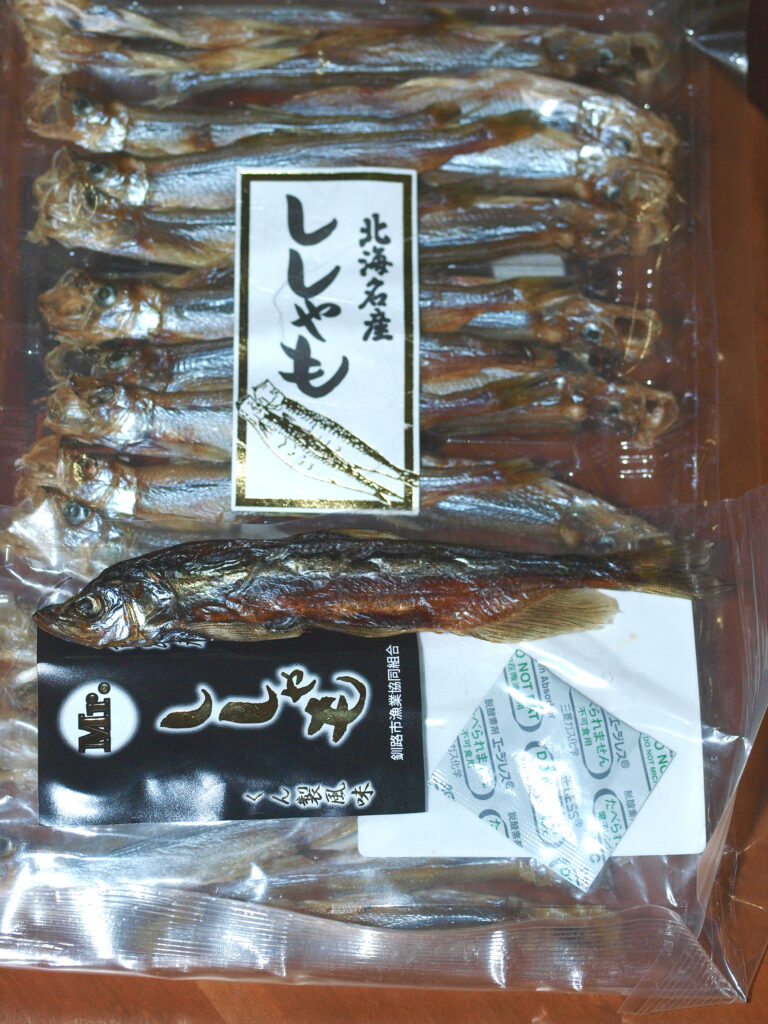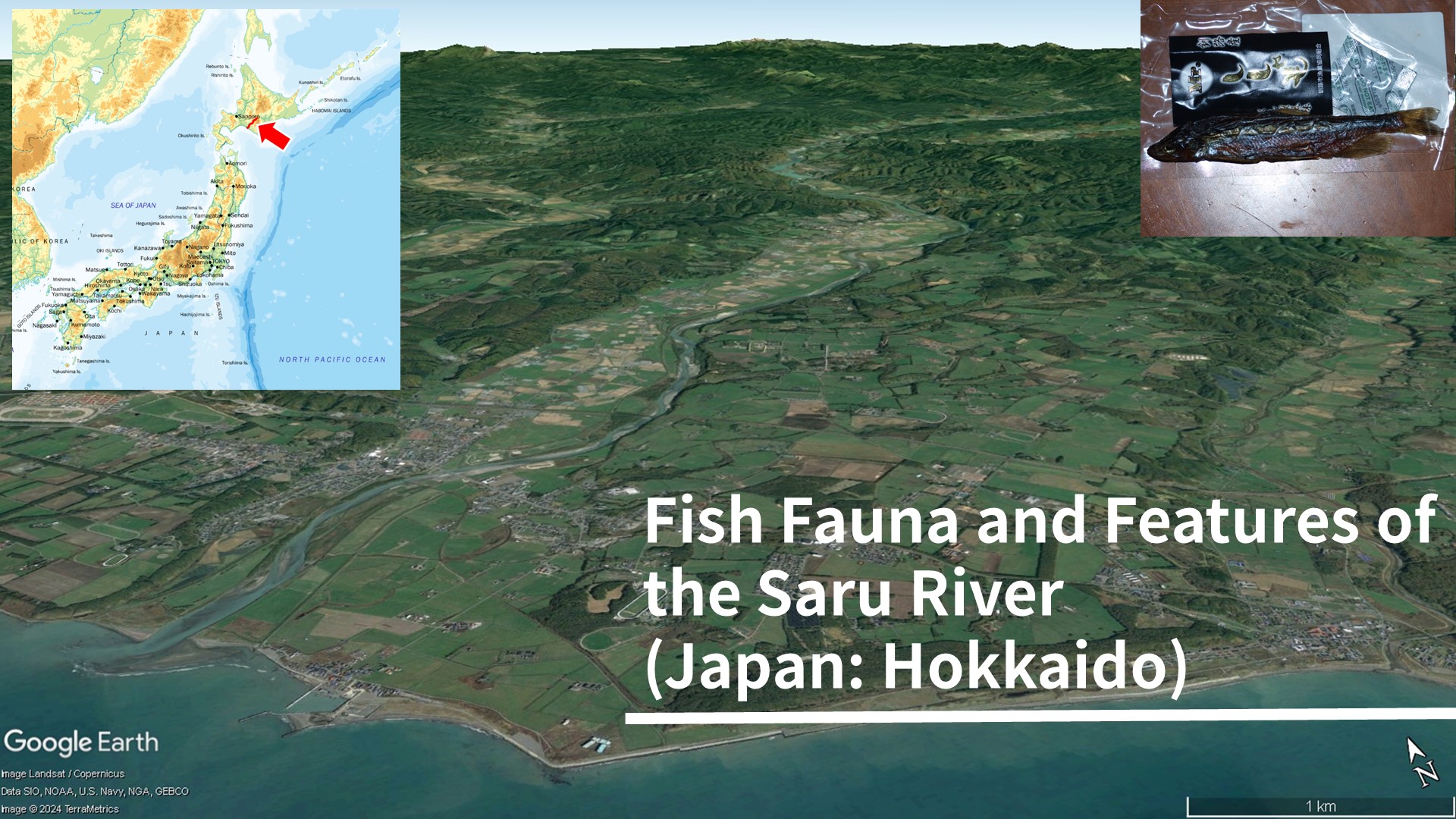What kinds of fish exist in the rivers of Hokkaido, the island located to the north of Japan? As a means to explore this question, let’s introduce the Saru River, which flows through the central southern part of Hokkaido, and the fish that inhabit it. Hokkaido, as an island, is bordered by three seas: the Sea of Japan, the Sea of Okhotsk, and the Pacific Ocean. The Saru River flows into the Pacific Ocean.
Overview of the Saru River
The Saru River is 104 kilometers long and flows into the Pacific Ocean. The river basin covers an area of 1,350 square kilometers, with the source of the river at an elevation of 1,175 meters. Furthermore, the Nibutani Dam is located about 21 kilometers upstream from the river mouth.
Characteristics
The source of the Saru River is in a primeval forest representative of the upper part of Hokkaido’s cold temperate zone. It belongs to the Hidaka Mountains Erimo Quasi-National Park and is designated as a national natural monument. The forest, a mix of Todomatsu (Japanese fir), Ezo spruce, and Dakekanba (Erman’s birch), serves as a habitat for wildlife such as the Hokkaido brown bear, the Ezo deer, and the Ezo grouse. The area is also designated as a wildlife protection area. The river mostly flows through narrow valleys in mountainous areas, and the river width is narrow. The downstream area also has narrow plains, with terraces formed along the riverbanks. This region was a major settlement area for the Ainu, the indigenous people of Japan. As such, there are many facilities in Biratori Town, through which the Saru River flows, that convey Ainu culture.
Fish Fauna Characteristics
The Saru River, located in Hokkaido, is characterized by the presence of species from the lamprey family, the salmon family, the smelt family, and the stickleback family, which are typical of northern regions. This includes many species common to Russia. However, species such as the Japanese huchen, pink salmon, and sockeye salmon are not found in the Saru River. These species tend to prefer long rivers with gentle flows at some points, and the swift currents of the Saru River may not be suitable for their habitat. It is notable that four species of smelt (from the smelt family) have been confirmed in the Saru River. Among them, the capelin (Spirinchus lanceolatus) is an endemic species that only ascends the Pacific side of Hokkaido, making it a representative fish of this river. This fish is highly delicious, mainly served dried. During the capelin fishing season in October and November, fresh capelin sushi can be enjoyed at sushi restaurants in Mukawa Town. These capelin do not circulate in urban areas and are a delicacy only available in this region. However, in recent years, the population of Spirinchus lanceolatus has declined, leading to the suspension of fishing in 2023 in Mukawa Town for resource conservation. The main cause is believed to be the rise in seawater temperature. There are also reports from the United States that the Delta Smelt (Hypomesus transpacificus), another species from the smelt family, has not been caught for six consecutive years. The future of the Saru River’s capelin is of concern.
The List of Freshwater Fish Species in the Nakagawa River
| No. | Species | Life Cycle | Origin | 2016 | 2021 |
| Petromyzontidae(Lampreys) | |||||
| 1 | Lethenteron reissneri | Fr | Native | ○ | |
| 2 | Lethenteron camtschaticum | Fr | Native | ○ | ○ |
| Anguillidae(Eels) | |||||
| 3 | Anguilla japonica | M | Native | ○ | ○ |
| Cyprinidae(Carps and Minnows) | |||||
| 4 | Cyprinus carpio | Fr | Intorduced | ○ | ○ |
| 5 | Carassius sp. | Fr | Native | ○ | ○ |
| 6 | Pseudaspius brandtii brandtii | M | Native | ○ | |
| 7 | Pseudaspius sachalinensis | Fr | Native | ○ | ○ |
| 8 | Pseudaspius hakonensis | Fr | Native | ○ | ○ |
| 9 | Pseudorasbora parva | Fr | Non-indigenous | ○ | ○ |
| Cobitidae(Loaches) | |||||
| 10 | Misgurnus anguillicaudatus | Fr | Native | ○ | |
| Nemacheilidae(Stone Loaches) | |||||
| 11 | Barbatula oreas | Fr | Native | ○ | ○ |
| Osmeridae(Smelts) | |||||
| 12 | Spirinchus lanceolatus | M | Native | ○ | |
| 13 | Osmerus dentex | M | Native | ○ | |
| 14 | Hypomesus japonicus | E | Native | ○ | |
| 15 | Hypomesus nipponensis | M | Native | ○ | ○ |
| Salmonidae(Salmon and Trout) | |||||
| 16 | Salvelinus leucomaenis leucomaenis | Fr | Native | ○ | ○ |
| 17 | Oncorhynchus mykiss | Fr | Native | ○ | ○ |
| 18 | Oncorhynchus keta | M | Native | ○ | ○ |
| 19 | Oncorhynchus masou masou | M | Native | ○ | ○ |
| Gasterosteidae(Sticklebacks) | |||||
| 20 | Gasterosteus aculeatus aculeatus | Fr | Native | ○ | |
| 21 | Pungitius sinensis | Fr | Native | ○ | |
| Mugilidae(Mullets) | |||||
| 22 | Mugil cephalus cephalus | E | Native | ○ | |
| 23 | Planiliza haematocheilus | E | Native | ○ | ○ |
| Cottidae(Sculpins) | |||||
| 24 | Cottus amblystomopsis | M | Native | ○ | ○ |
| Gobiidae(Gobies) | |||||
| 25 | Acanthogobius lactipes | E | Native | ○ | ○ |
| 26 | Tridentiger brevispinis | Fr | Native | ○ | ○ |
| 27 | Rhinogobius sp.OR unidentified | Fr/M | Native | ○ | ○ |
| 28 | Gymnogobius petschiliensis | M | Native | ○ | ○ |
| 29 | Gymnogobius urotaenia | Fr/M | Native | ○ | ○ |
| 30 | Gymnogobius opperiens | M | Native | ○ | ○ |
| 31 | Gymnogobius castaneus | Fr | Native | ○ | ○ |
| Pleuronectidae(Righteye Flounder) | |||||
| 32 | Platichthys stellatus | E | Native | ○ | ○ |
| Total | 27 | 28 |
** : While some species have been subdivided, the names of species have been retained as they were previously for comparison with past data.
*** : Salvelinus leucomaenis and Oncorhynchus masou masou are included in the record because the author has confirmed their perennial habitat in the upper reaches of the survey area.
****: Classification of Life Cycles
・ Freshwater: Species that can spend their entire life in freshwater.
・ Migratory: Species that must migrate between freshwater and saltwater during their lifetime.
・ Euryhaline: Species that primarily inhabit brackish or saltwater, but may also venture into freshwater.
However, since there are species with intermediate characteristics, such species have been categorized at the author’s discretion.

Hokkaido is an island located in the northern part of Japan’s territory, facing the Sea of Japan, the Sea of Okhotsk, and the Pacific Ocean. The rivers in Hokkaido have slightly different fish fauna depending on the sea they flow into. The Saru River is representative of rivers flowing into the Pacific Ocean. The protection of resources and conservation efforts will continue to be important to preserve the unique deliciousness of regional specialties like fresh capelin sushi. It’s hard not to hope that we can continue to enjoy these local dishes in the future.




コメント